This page is more than six years old and was last updated in November 2019.
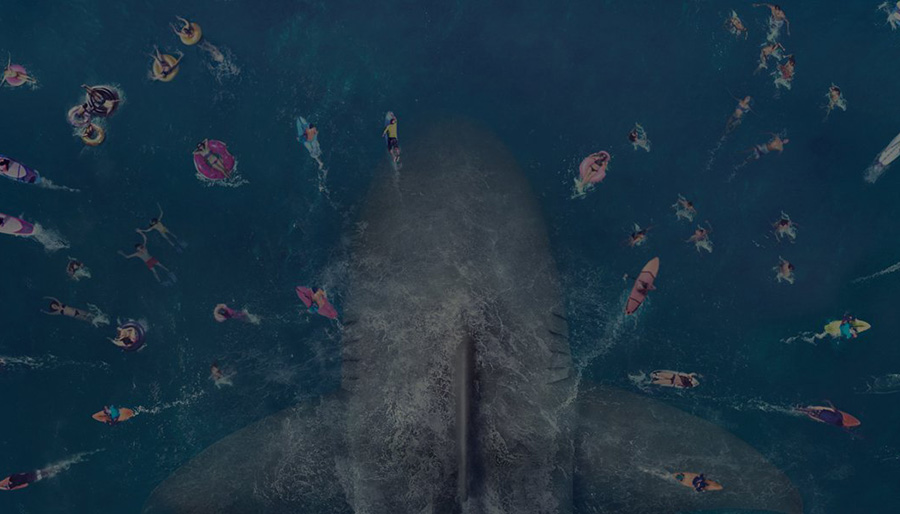
If you have a fear of what might be lurking deep in the murky blue ocean waters below you, then the new movie 'The Meg' will surely give you nightmares. In the movie Jason Statham battles a 21-meter shark in order to save the crew of a stricken submersible on the floor of the Pacific Ocean.
The science fiction thriller is loosely based on the book 'MEG: A Novel of Deep Terror' by Steve Alten, but even though it's fiction, the origins of the ginormous ocean killer is rooted in reality.
Megalodon are thought to have gone extinct around 2.6 million years ago, but Steve Alten's story isn't the only one to tell the tale of the rediscovery of the shark. Worryingly, some of these stories are said to be alleged real life megalodon sightings and are as recent as the 20th century.
So, it seems the not everyone is totally convinced that megalodon are really extinct, some believe they are hiding in the deepest parts of the Earth's ocean, just waiting to be rediscovered by humankind.
Megalodon were said to have been one of the largest and most powerful predators to have ever lived, being suspended in water allowed them to evolve to be much bigger and meaner than any predator on land. Fossils of the mammoth sea creature suggest that they may have reached a whopping length of 25 meters, making it the largest known fish that has ever lived.
It's thought that visually they would have looked like a stockier version of the great white shark, but with a huge and much more powerful jaw. It had thick, robust teeth that could crush its prey with a massive 41,000 pounds of pressure. To put this into perspective, the tyrannosaurus is the hardest-biting land animal ever known, it could bite down a comparatively small 12,800 pounds. Humans bite with a tiny 150 pounds of pressure.

Photo: pixabay.com
In fact, the beast gets its name from its massive mouth. Swiss naturalist, Louis Agassiz, gave this giant shark its name, Carcharodon megalodon, the latter part of the name taken from Ancient Greek and meaning "big tooth".
The megalodon is sometimes also referred to as a "giant white shark," "megatooth shark", "big tooth shark" or, as in the movie, simply "Meg".
It's believed that at one time the megalodon dominated the oceans around the globe. Its fossils have been found in many places around the world, bordering all oceans of its time.
The megalodon reign most likely came to an end due to various changes to the Earth's climate at the period that the beast lived. These changes included the cooling of the oceans in the build up to the ice age and the lowering of the sea level. This would have effected suitable nursery areas, as the Meg preferred warmer, costal waters.
Directed by Jon Turteltaub, the 2018 movie 'The Meg' isn't the first time a megalodon has featured in works of fiction. The deadly sea creature also features in the awful 2002 movie, 'Shark Attack 3: Megalodon' and the Mega Shark series, the first of which, 'Mega Shark Versus Giant Octopus' was released in 2009. In the series the Mega shark also took on a crocosaurus, a mecha shark and a kolossus.
The megalodon was also the star of a controversial Discovery Channel television mockumentary, that kicked off the channel's Shark Week in 2014. Although 'Megalodon: The Monster Shark Lives' was clearly a hoax, many viewers were sucked in by the fictional eyewitness accounts and staged interviews with scientists, who presented "evidence" that megalodon was not only still alive, but also attacking humans and boats.
The two-hour documentary attracted 4.8 million viewers, the biggest in Shark Week's 27-year history. The show's executive producer, Michael Sorensen explained why the network had decided to make a docufiction on the topic, "with a whole week of Shark Week programming ahead of us, we wanted to explore the possibilities of megalodon. It's one of the most debated shark discussions of all time, can Megalodon exist today?"
Although there was a disclaimer that aired in the final seconds of the documentary, it seems that Discovery Channel is at least partly responsible for propagating the myth that the megalodon could still be alive somewhere out there in the deep blue.
Advertisement ‐ Content Continues Below.
Alleged Real-Life Sightings Of Megalodons
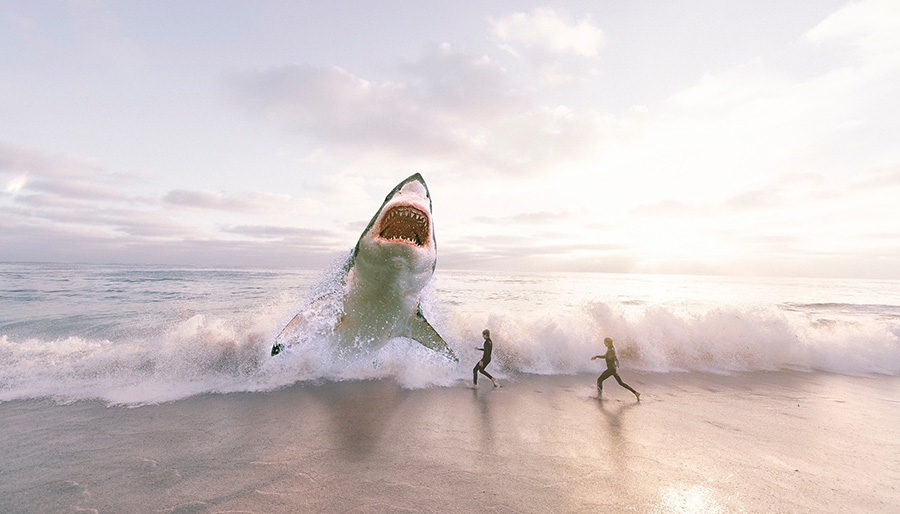
Photo: pixabay.com
There have been a few unsubstantiated sightings of giants sharks, which are said to fit the description of a megalodon, with the biggest being 90 meters long. One such claim can be found in Polynesian mythology, which tells of a giant shark called the "Lord Of The Deep," which is said to remain elusive in the depths of the ocean to this day.
In David Stead's book 'Sharks And Rays Of The Australian Seas', the author shares a story he was told in 1981 by several hardened fishermen who encountered a huge shark, that they claim was 35 metres in length. The incident happened off of Broughton Island while the men were fishing for crayfish. The shark they saw was so terrifying that the men refused to return to the waters for several days. When questioned by the author and the Fisheries Inspector, the fishermen said that its head alone was "at least as long as the roof on the wharf shed at Nelson's Bay."
In the book 'Let's Go Fossil Shark Tooth Hunting', B.C. Cartmell wrote about a sighting of a Meg off the edge of the Great Barrier Reef in the 1960s. The sailor involved in the incident claims that while his 26 meter boat was anchored to allow the crew to carry out engine repairs, a huge white shark swam slowly past their stricken ship. It was by far the largest shark they'd ever seen as it rivalled the boat in size. The crew all unanimously agreed that it wasn't a whale.
Off the Baja Coast of Mexico there are stories of a huge black shark known as the "Black Demon Of Cortez". One fisherman, Eric Mackreported, who witnessed the monster claimed that its towering tail stuck one and a half metres out of the water and as it passed, it caused his boat to rock.
The Biggest & Most Terrifying Sea Creatures
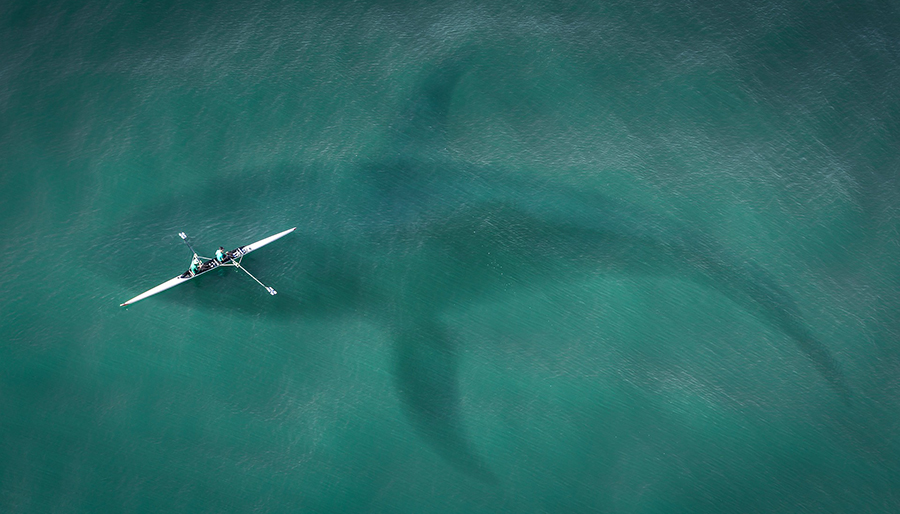
Photo: pixabay.com
In reality, claims that a megalodon could be hiding deep in the darkest ocean trenches is unlikely as it's believed that Megs would have resided in warm costal waters, and due to their size would be unable to survive in a cold and nutrient-poor deep sea environment.
Sadly, even if megalodon were discovered to be alive today, they probably wouldn't be around for long. Experts say that it's likely humans would soon put them on the path to extinction once again.
But just because we're safe from the threat of being swallowed alive by a megalodon doesn't mean the ocean is in anyway safe. Although not quite the same 25 meter length as a Meg, the whale shark is the largest shark in the ocean and it's not far off. They have been known to get as large as 18 meters long.
Below are five sea creature you definitely wouldn't want to come face to face with when going for a dip.
1. Lion's Mane Jellyfish
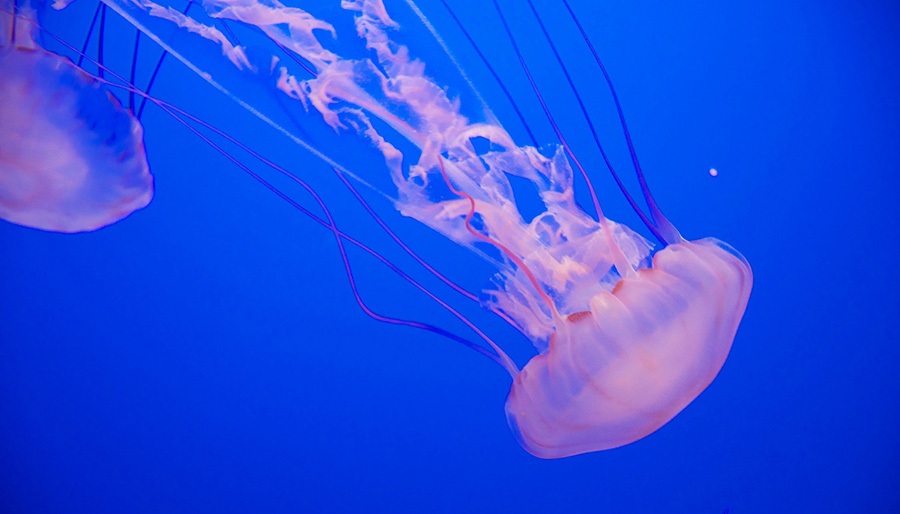
Photo: pixabay.com
Also known as the giant jellyfish or hair jelly, the largest recorded specimen was found washed up on the shore of Massachusetts Bay in 1870. It had a bell with a diameter of 2.3 metres and stinging tentacles 37 meters long.
2. Whale Shark

Photo: Abe Khao Lak
The whale shark is a slow-moving, carpet shark and is the largest known fish. It holds many records for its gigantic size in the animal kingdom, including being the largest living non-mammalian vertebrate. The largest confirmed specimen had a length of 12 meters, but there are several reports of specimens over 18 meters long.
3. Japanese Spider Crab
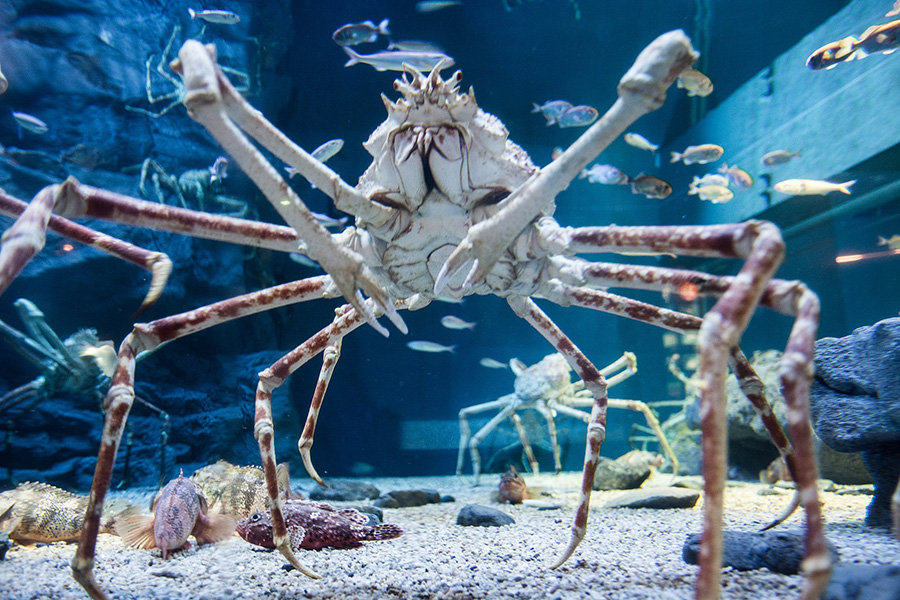
Photo: Takashi Hososhima
As if spiders aren't scary enough, this one has the largest leg span of any arthropod. It can grow up to five and a half meters from claw to claw, with a body of up to 40cm long. Luckily, this one isn't likely to crawl out from underneath your bed as it's confined to the waters around Japan.
4. Giant Isopod
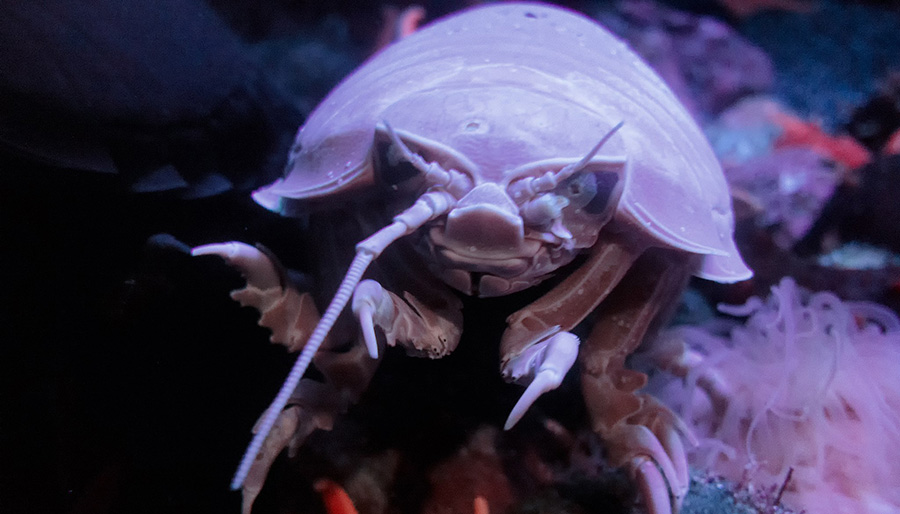
Photo: Eric Kilby
The giant isopod is tiny when compared to a megalodon, but what makes this sea creature so unpleasant is that it's like a scaled up version of a bug that you might find on land. They are known for their resemblance to the much smaller common woodlouse, to which they are related, but these underwater versions are generally between 8 and 15cm long, but can grow up to 76cm in length.
5. Colossal Squid
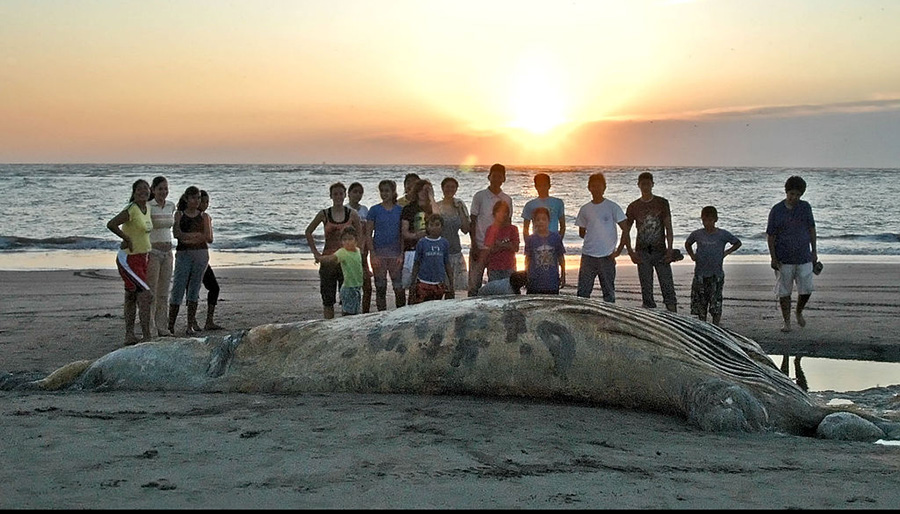
Photo: Benjamin Dancer
The colossal squid is believed to be the largest squid species and is rarely spotted. Specimens have been found that are up to 14 meters long. It's believed that some could weigh as much as 750 kilograms, making it the largest-known invertebrate.
'The Meg' In Cinemas Now
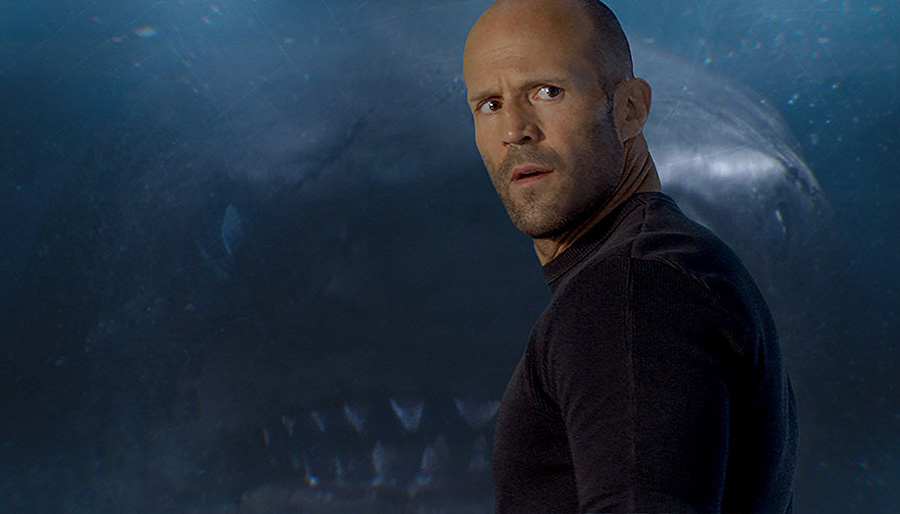
Jason Statham plays the role of an expert sea diver and Naval Captain, Jonas Taylor. While on a mission to the unexplored recesses of the Mariana Trench, he's forced to abort his mission and abandon half his crew after an attack on his vessel by a mammoth, 70-foot sea creature, believed to be extinct for more than a million years.
The tragic incident cost Jonas his career and his marriage, but after being dishonourably discharged a submersible crewed by a team that includes his ex-wife, runs into difficulties and ends up disabled at the bottom of the ocean. Jonas is the one who gets the call and must confront his fears and risk his own life in order to save the lives of everyone trapped below, knowing that the largest marine predator that ever existed is still on the hunt in the dark waters.
If you see 'The Meg' look out for the little nod to Pixar's 'Finding Nemo'. At one point a terrified Jonas jumps into the water and starts singing to himself, "just keep swimming, just keep swimming..." Dory would be proud of him.
Learn With Higgypop
Hosted by Paralearning in association with Higgypop, these courses on ghost hunting, paranormal investigations, and occult practices draw on the experience of our team of paranormal writers.

Diploma In Modern Demonology For Paranormal Investigators
This course gives you practical and useful knowledge of ghost hunting and paranormal research, which is invaluable when conducting your own paranormal investigations or as part of a group event.
View Course
Diploma In Parapsychology & Psychic Phenomena
This course gives you practical and useful knowledge of ghost hunting and paranormal research, which is invaluable when conducting your own paranormal investigations or as part of a group event.
View CourseMore Like This

ParanormalJune 08, 2024
Why Cows Are Targeted By Aliens In Cattle Mutilations

ParanormalApril 01, 2023
Haunted Pet Shop Claims Deceased Pets' Ghosts Are Roaming the Aisles

AnimalsAugust 16, 2022
10 Most Famous Animal Ghosts In The UK
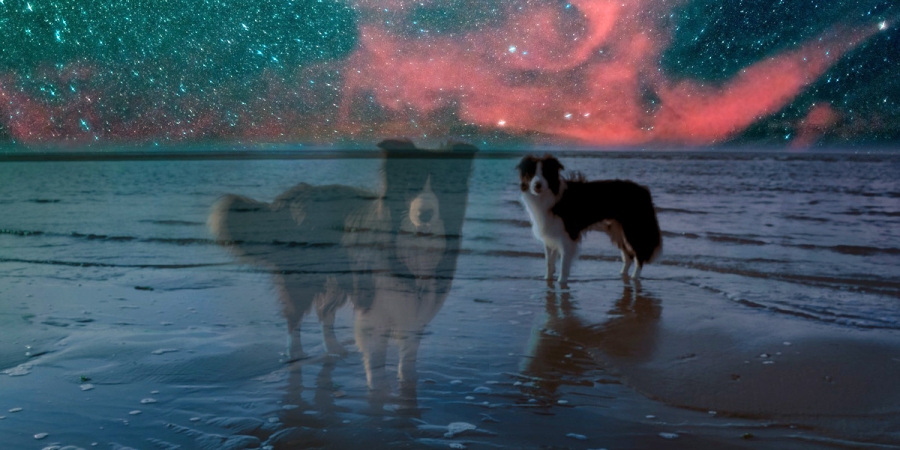
GamesMarch 13, 2022
The British Animal Ghosts Quiz
 See More on Audible
See More on Audible
Comments
Want To Join The Conversation?
Sign in or create an account to leave a comment.
Sign In
Create Account
Account Settings
Be the first to comment.